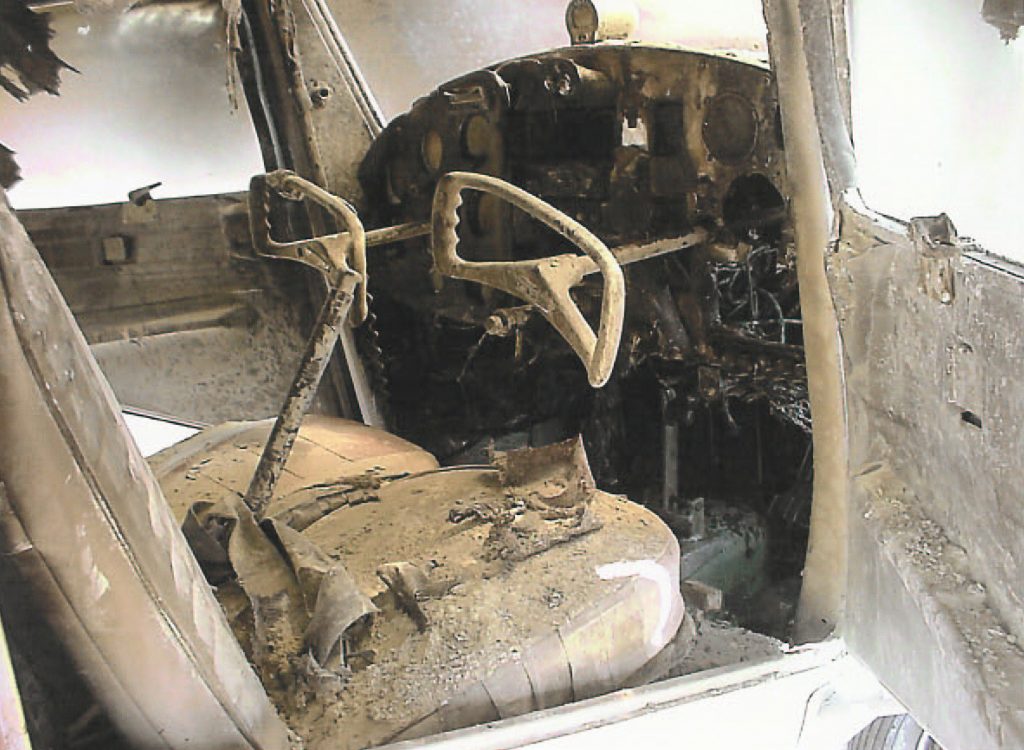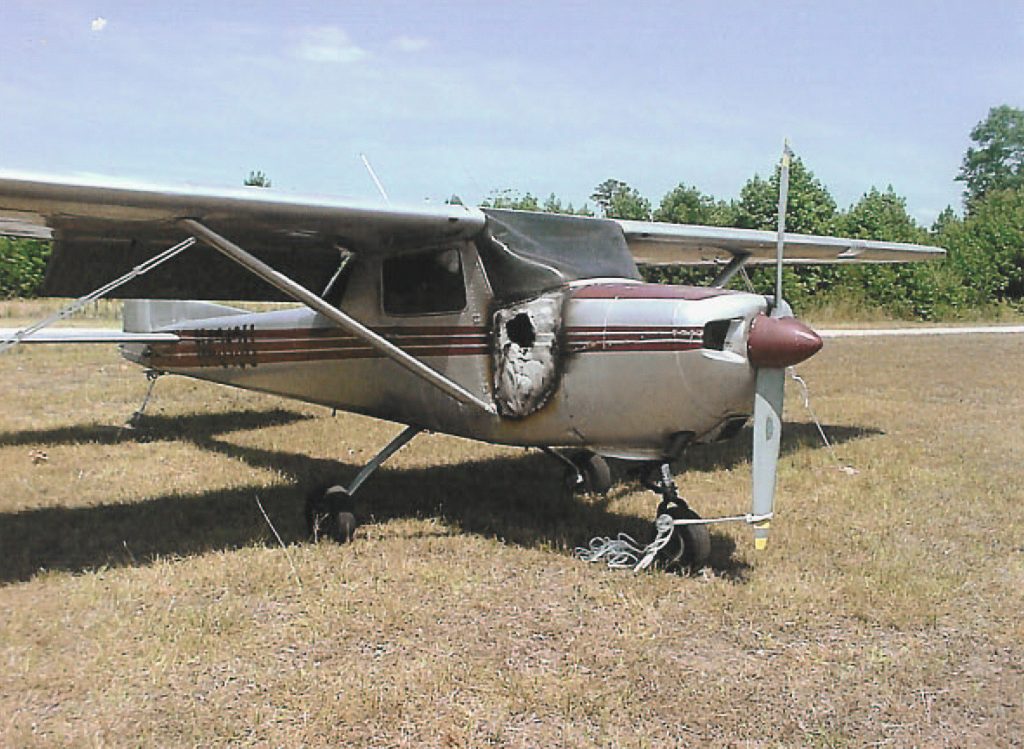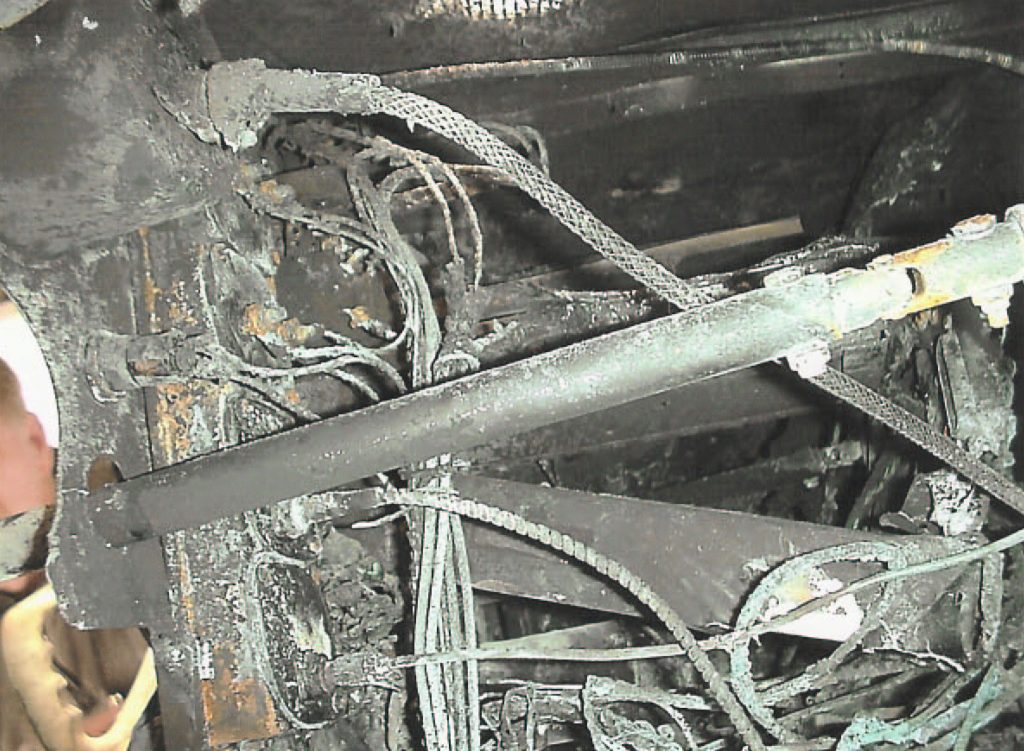Settling back into Gleim life this past week following a fantastic, though hectic Oshkosh, I noticed that one particular model airplane was getting a lot of flight time around our house: a wonderful old diecast DC-9 we found on a morning stroll through the Air Venture marketplace.
This morning, I watched my oldest son zooming it in clear for a seemingly never-ending sequence of touch-and-gos on the kitchen counter as breakfast grew ever colder. In one scenario, I heard my son say “crash landing,” so I asked what happened and he responded that there was a fire on board. I asked him about the scenario, but he responded with his own question: how often do fires occur? I explained that onboard fires are not common, but it got me thinking about how often in-flight fires occur, though more specifically, how often do in flight electrical fires happen in flight?
Having looked through the hundreds of fire-related ASRS reports for this year, approximately six are specific to electrical fires annually. I decided to cast the net wider and refocus on the most severe of these occurrences and see what we could learn today. Reviewing the NTSB reports I found from 1992 through July 2022, there were 15 incidents or accidents with a probable cause of “electrical fires.” So, there’s about 1 every 2 years.
Of the 15 NTSB reports listing electrical fires as a probable cause, 20% had fatalities, 7% had serious injuries, and 13.3% having minor injuries. 14 of the 15 NTSB reports were conducted under 14 CFR Part 91 and the other NTSB report was a flight conducted under 14 CFR Part 121.
How prepared are you and your aircraft today?
Modern air crews are extensively trained for in-flight fire response. They practice this in their formal simulator training sessions in some form (electrical, engine, APU, lavatory, etc) each time they attend simulator training. They are well versed and prepared in the event an in-flight fire occurs. How often do you train and how well equipped are you to respond to an in-flight fire?
Modern aircraft materials are procured and applied with a focus on fire safety. Each pound of weight costs commercial aircraft operators between $100 and $300 in operating expenses over the service life of an aircraft. Fire-safe materials in all modern aircraft are light but often expensive. In contrast, older planes, which are common in general aviation, have components that do not have the same fire retardation. So, how fire safe is your aircraft?
What is an electrical in-flight fire?
The proliferation of lithium batteries onboard aircraft has exploded in the past decade, pardon the pun. This has even given rise to unmanned aircraft having their own onboard fires. Though for us in our small aircraft, electrical fires are any ignition or fire emanating from an onboard electrical source. You may think it to be a bunch of flames, though after examining these NTSB reports, the flames often occur later; there’s no fire without smoke. An inflight electrical fire will be more subtle, such as a burning odor, a very hot panel (or surface), or a tripped circuit breaker. Electronic devices that are intermittent or acting abnormally may also be a sign of an electrical fire.
Some of the in-flight fires burn slowly with examples of electrical fires giving indications over more than one flight. As with most maintenance issues, if you listen to your aircraft, the signs will be there; machines often give you notice before an all-out failure. When it comes to any of the symptoms mentioned above, act before you encounter a serious problem. If an electronic device is intermittent, ask a mechanic to look at it to make sure it’s not an electrical short foreshadowing a more serious issue.
What happens if you think there a chance of an in-flight electrical fire?
Please do not let the first time you think about how best to respond to an electrical fire be the first time you actually have to respond to an electrical fire.
Know what to do so you’re not hot-thumbing through your AFM to find an emergency checklist. Look for early indicators such as an over-voltage warning, electrical load increase, or popped circuit breakers. Know how to use your fire extinguisher appropriately if prevention is no longer viable.
In general, the following is most likely what your AFM recommends (but always follow your aircraft manufacturer’s guidelines):
- Landing immediately will be preferable while addressing the ongoing concern. Advise ATC of the situation, declare an emergency, and let them know you may need to shut your master switch off.
- Identify any tripped circuits and manually turn off any electric components associated with the tripped circuits.
- If you can identify the equipment that may be at fault, pull the related circuit breaker and turn off the suspect equipment.
- If you cannot identify the equipment that may be at fault or you don’t know what is causing the issue, turn your master switch off.
- Look for a suitable landing area and land.
Failure to Follow Proper Emergency Procedures
20% of the referred NTSB reports openly cite the pilot-in-command’s deficient emergency procedural response as a contributing factor to the accident. (After reading these reports, my personal observation is that the NTSB provides latitude to PICs’ judgments during these emergencies, but if there is a blatant disregard for a checklist or doing something in direct conflict with the AFM checklist, a lack of following emergency procedures seems to be added to the probable cause and findings section.)
DO NOT RESET CIRCUIT BREAKERS
FAA Advisory Circular 120-80 outlines the best practice for resetting a circuit breaker. In a nutshell, no one should reset a circuit breaker unless;
- It is explicitly specified in the AFM, OR
- If, in the PIC’s judgment, it is necessary for the safe completion of the flight.
In one of these tragic reports, a CFI attempted to reset a circuit breaker that would not reset. Due to extensive damage to the aircraft, the NTSB could not determine conclusively whether that specific circuit breaker was the cause of the electrical fire.
Trends in the NTSB Reports
- Poor Maintenance Causing Electrical Fires
Half of the NTSB reports cited refer to poor craftsmanship in prior repairs, use of unapproved components, or both. As you might expect, the majority of the instances occurred soon after the repairs, though some in-flight fires occurred months after the initial maintenance work.
Do not assume that all of the pilots and/or owners were aware that their aircraft had unapproved parts. In one fatality, an avionics shop added a noise filter that was not approved yet signed off “in accordance with current Regulators of the Federal Aviation Agency” without filing FAA Form 337, “Major Alteration or Repair.” A subsequent repair shop replaced the filter even though it was installed and unapproved. A 3rd repair shop replaced the audio panel after the pilot reporting a burning odor and a hot-to-the-touch audio panel on a previous flight. This specific incident resulted in a fatality. Based upon reading this NTSB report, it seems to me that the pilot did his best to try to have an airworthy aircraft but was totally unaware of the unapproved part that was ultimately responsible for his untimely demise.
- Avionics Cooling Fans and Batteries
Avionics cooling fans, batteries, and their connections were each cited in NTSB reports. They were responsible for a third of the referred NTSB reports.
- Land Quickly
Most of the NTSB reports cited the first instance of smoke on takeoff or landing, so the pilots were able to land quickly. In many of the other instances, if turning off the circuit breakers or the master switch did not resolve the smoke or fire, as you might expect, there were quick emergency landings. So be prepared to land anywhere possible and, as a final consideration, always unlatch the cabin doors in the event of an emergency landing.
Consider opening a cabin door or window to help clear the cabin of any smoke or fumes. However, in one NTSB report, a pilot opened the canopy, which allowed the extra oxygen to exacerbate the fire. When the pilot closed the canopy, the fire subsided some.
In another NTSB report, the pilot tried to make an airport 19.5 miles from his initial ATC report of smoke. The wreckage was found 12 miles from the intended airport, so the pilot was only able to fly 7 miles from the time he first reported smoke to ATC. It is easy, in hindsight and being relaxed at home in a chair, to provide a better solution than attempting to fly for nearly 20 miles, but I feel obligated to emphasize that an in-flight fire is extremely serious and you may not have the ability to fly a few miles. The best answer may be any field or road where you know you and your passengers can walk away after the landing.
Train today, be safe tomorrow.
As with every facet of pilot training, the work you put in on the ground is the key to effectively improving safety for everyone in the air. Having a reflex understanding of all checklists and their purpose is foundational to the competent pilot.
An abnormal procedures or emergency checklist set is of equal importance to the normal procedures checklist we use every flight as competent pilots. Emergency actions should be performed in immediate response to a flight condition with the checklist function being a “checklist” used to review the actions applied.
A biproduct of this approach is scenario-based training to reduce overall training costs and greatly decrease pilot frustration. The upside in this context is the time that can be saved in accelerated response times and the lives that could be saved by prompt decisive actions.
If you are a CFI, generate scenarios on the ground through chair flying to stimulate checklist proficiency . When you’re sitting in the FBO across from your student, tell your student, “in-flight fire, what do you do?” Have them work through their actions using the checklist from their memory to see if they can respond adequately. On the other hand, if you are continually on the learning path at 10 hours or 10,000 hours, reach out to us here at Gleim regarding how best to utilize flight training devices to run active emergency scenarios. Simulators, including our BATD, can help you prepare for these types of emergency situations.
What should you have learned?
While electrical in-flight fires are rare, they are extremely serious. Depending on the age of your plane, you may be more susceptible to having a situation where a small electrical fire can grow quickly. Practice training your emergency checklist and know your AFM’s procedures for an in-flight fire. Unless your AFM recommends it, do not reset any tripped circuit breakers. When maintenance is completed on your aircraft, make sure your repair shop has used all approved parts and, if they haven’t, ask them to file FAA Form 337, “Major Alteration or Repair.”




